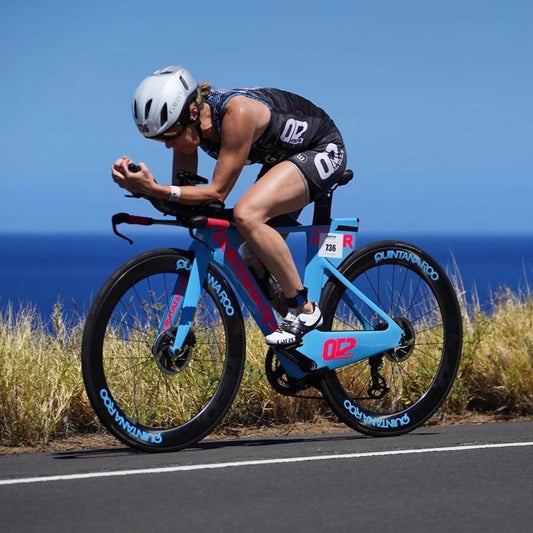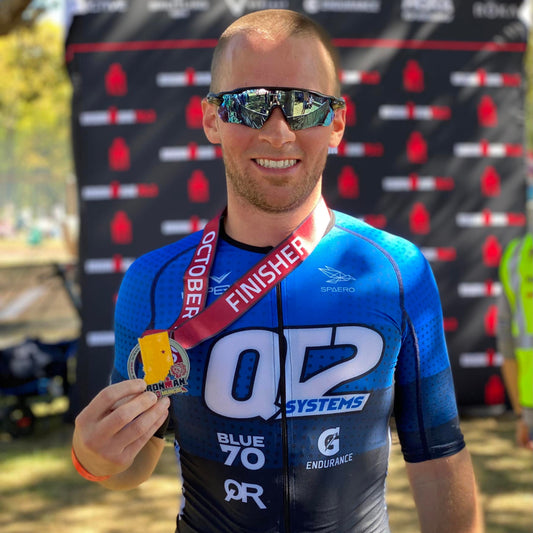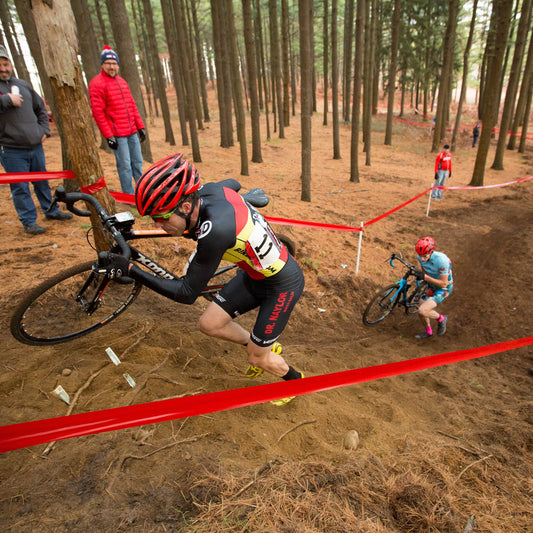Critical Volume I
Okay, this one is for the more math or detailed oriented folks out there. These thoughts are the fundamental basis of my training principals as well as the calculator. Coming into triathlon, most athletes try to cut corners on training volume by completing intense workouts. This is a short cut to faster race times over shorter distances as well as a short cut to injury. Below I will discuss what it takes to gain speed, efficiently and safely for the long haul.
In my opinion, every athlete has a speed potential based on their swim/bike/run paces at threshold. Based on these paces, one can get a good idea on how they may perform at other event distances. There are many calculators out there (like this one: merv's) that will tell you what your marathon performance may be based on your 5K time. These performance estimates, use a a curve that defines how your pace changes relative to race distance. I call this curve, a speed potential curve. What most calculators don't tell you is that in order to achieve this speed potential you must have a certain amount of endurance training given the event distance. I believe there exists undeniable volume thresholds that must be met prior to the event in order to achieve that speed potential as well as to have an enjoyable experience. The volume thresholds, or critical volumes that I like to use are as follows:
Swim - 9/3 of the event distance per week
Bike - 8/3 of the event distance per week
Run - 7/3 of the event distance per week
For single sport events like the marathon, I believe these volumes should be met for at least 5 weeks (preceding the taper) during training for the event. For triathlon, I believe these volumes should be met for at least 1 week during training (ideally during your final build weeks based on the build/taper protocols. The duration is less in triathlon because of the cross training effect between the disciplines. Another factor that I have observed is that additional benefit can be realized on run performance by increasing bike volume up to 50% greater than those volumes specified above. This tactic is pretty elite stuff and should not be considered by folks who have not already met the other critical volumes or feel that they have room to improve their pace at threshold.
Okay, so how does one use this information to schedule their workouts or plan their season? First off, total volume from year to year should not increase more than 30%. If you are not sure of your total year volume, use your sustainable weekly volume from the previous year. Your sustainable weekly volume can be determined by looking at your previous years training log, and observing what your highest volume consecutive weeks were. You should begin to see a consistent volume that you were able to perform for at least 4-6 weeks during the season without burnout or injury. Your goal should be to build up to, and meet or exceed this volume by up to 30% prior to your final two week build for at least 4 weeks. Based on the build/taper protocols, the final build week should be 20% above this sustainable volume. Now, where do you fall in terms of critical volume? Using the factors above you may find that you will be well trained and ready for a half iron event but under trained for an iron event. Does this mean that you should not complete that Ironman you were planning? No, it just means that you will not meet your speed potential for the race, and chances are that you will not be happy (hit the wall, cramp, drastically reduce your pace) at some point during the race. If you fall into this category, you should carefully consider your pacing for the race.
The critical volume factors should be used to determine how much volume to complete for your goal event. Typically when I lay out a multiple month plan leading into an event, I look at where the athlete's volume is currently and whether or not it will be safely possible to reach the critical volumes for the event in time for the taper. The priorities for an athlete trying to set up his or her own schedule should be as follows:
- Meet the critical volume for your event using low intensity workouts (less than 85% of threshold heart rate). Don't bother adding intensity until you feel you will be able to meet the critical volume for your event. Sometimes if it is obvious that you will be able to meet the critical volume (or close to it), you can add intensity in parallel with adding volume.
- Begin to add intensity workouts to your weekly routine with no more than one intense workout per week on the bike or run. It is not important what format these workouts come in. An example would be to complete hill repeats earlier in the season and track workouts as your races approach. Try to make the workouts more and more race specific as your race season draws closer. Just get good and tired for each of these workouts, don't totally wipe yourself out. Once you have met the critical volumes, these workouts are designed to increase your speed potential curve (5K times, 20min TT times, 400yd swim times).
- For elite athletes in the ITU scene or that race at shorter distances, sometimes the best way to improve speed potential after adding intensity is to increase volume beyond what is required for endurance. For most, this is not necessary because weekly intense workouts are enough to elicit speed improvements.
- After meeting critical volume and increasing speed potential, additional benefit can be gained on the run by adding up to 50% bike volume to the critical volumes above.
Let's take a look at what this means for the most extreme example, Ironman. Have you ever wondered why the time gaps on a percentage basis between the pros and age group athletes are much greater in Ironman than Olympic distance racing? It's simply because most pro Ironman athletes are able to meet their critical volumes, while age groupers are not. The pros are able to maintain pace, while most age groupers significantly slow down at some point during the race. For example, if I wanted to be a top pro Ironman triathlete, I would want to meet the critical volumes for the event plus the additional 50% bike volume.
*Swim = 2.4 miles = 4220 yds x 9/3 = 12,660yds
*Bike = 112 miles x 8/3 x 150% = 450 miles
*Run = 26.2 x 7/3 = 60 miles
For a pro Ironman triathlete, this equates to about 3.5 hours of swimming, 23 hours of biking and, about 7 hours of running. This is a total of about 33.5 hours of training for the final build week before the race. Using the build/taper protocols, my sustainable weekly volume prior to the build should be about 20% less, or 27 hours in order to be properly prepared for the final build weeks. Based on this, it's no surprise that you see elite Ironman triathlete's training in the 30 hour range.
Sure, speed can be gained by shorting the critical volumes and doing more intense workouts however, a drastic reduction in total race time is realized when an athlete "hits the wall" during a race. In addition, the chance of injury is drastically increased with this kind of short cut. I find it much more beneficial and safe to meet the critical volumes first when possible.
Long workouts each week can be up to half of the bike volume and one-third of the swim and run volume each week. Intensity on these days should be easy for beginners to moderate for advanced athletes as they approach the racing season (no faster than halfiron pace minus 4 mph on the bike). All other workouts, other than your long workouts and key intense workouts should be at a very easy aerobic recovery pace.
-Jesse





